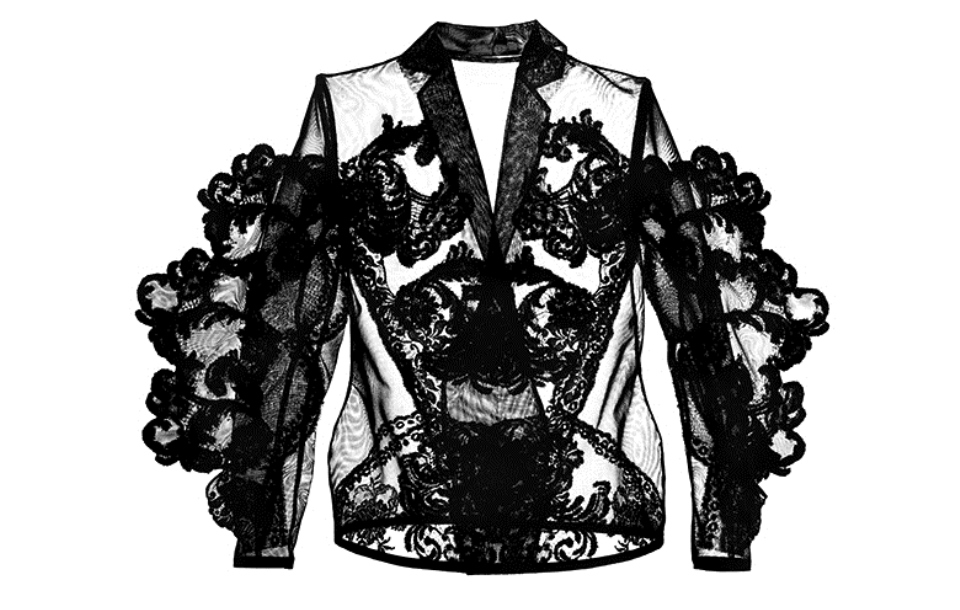
Director of the ECA and All Walks Diversity Network Mal Burkinshaw gives us an inside view on Beauty by Design: Fashioning the Renaissance at the Scottish National Portrait Gallery. The project is reminiscent of All Walks’ 2011 event at the National Portrait Gallery in London, “Snapped”, as it also seeks to link the historic portraiture in the gallery’s collection with modern fashion design and image making.
In 2011 we created the Edinburgh College of Art and All Walks Beyond the Catwalk Diversity Network, uniting academics to educate fashion students in celebratory approaches to diversity within the fashion design process. We initiated a student collaborative project with the Scottish National Portrait Gallery, celebrating historical ideas of beauty connected to modern depictions of such ‘ideals’.
I approached Dr Patricia Allerston (National Galleries of Scotland) and Dr Jill Burke (History of Art ECA) with the idea to create an exhibition, Beauty by Design: Fashioning the Renaissance. Our aim was to find ways to link paintings at the Scottish National Portrait Gallery and Scottish National Gallery to contemporary fashion design, photography and display. New Media Scotland soon came on board to direct a visionary approach to the overall exhibition aesthetic.
We launched the project in September 2012 with All Walks and experts from a variety of areas (history of art, fashion design, psychology and education), exploring contemporary and historical notions of beauty to see how they have altered over centuries. We worked collaboratively on the concept to take these paintings out of their historical framework and place them alongside the work of present-day artists and designers. In combination with new works in the exhibition, they would speak to concerns about human identity.
I developed design research that explored responses to body shapes and garments on view in the Scottish National Portrait Gallery’s Reformation to Revolution Gallery. Sources of inspiration included the portraits of Margaret Graham, Lady Napier; Mary, Queen of Scots, James VI and I as a boy, Lady Arabella Stuart and Lady Agnes Douglas.
The resultant work, ‘Silhouettes en Dentelle’ fuses seven modern classic jackets with renaissance fashion, creating a dialogue between past and present notions of ‘normalised’ body shapes through a metamorphosis of silhouette and scale. The jackets do not conform to standard measurements and are non-gender specific, inviting us to question our perceptions of beauty relating to body size and gender.
The ‘X-Ray’ silhouettes developed from collaboration with lace producer Sophie Hallette, celebrating the highly skilled activity involved in making this delicate material, a signifier of wealth, status and hierarchy during the Renaissance. Although favoured, black lace is rarely seen in portraiture of the time. The hand applique process took over 800 hours, where intricately cut motifs of lace were applied by hand onto performance netting.
Milliner Sally-Ann Provan created the headpiece ‘Memento Flori’, inspired by how the visual symbolism within the portraits in the Reformation gallery was used as public demonstration of the sitter’s status, wealth and good character. These symbols are repeatedly used in paintings of the period and Sally worked them into lace patterns based on Sophie Hallette lace designs. These were then laser-cut and engraved into transparent Perspex.
Knitwear designer Claire Ferguson created the exhibit ‘Double Exposure, 2014’, where she was drawn to celebrate the silhouette of Renaissance dress and how its distinctive lines were accentuated within portraiture during this time. Creating two dresses in one, the Sophie Hallette lace dress represents contemporary ideas of fashion and the knitted outer dress fuses a historically inspired silhouette with an innovative fine cotton, ribbed-like structure.
Paul Hodgson (photographer and artist), Sharon Lloyd (Southampton Solent University), Philip Clarke (Middlesex University) and Anne Chaisty (University of the Arts Bournemouth) created the collaborative work ‘Triptych’, made in response to Paris Bordone’s Venetian Women at their Toilet. The group considered ideas about altered perceptions of beauty, body image, race, age and social status, which are inferred within each figure in the painting and by the setting that they occupy. Dr Burke and Dr Allerston provided information on historical references and the symbolism within the work. The visual narrative is intended to challenge a more orthodox reading of the original painting, by raising questions about fashion media expectations, gender codes, beauty and morality.
Beauty by Design: Fashioning the Renaissance opens at the The Scottish National Portrait Gallery, Edinburgh 15th Nov 2014 – 3rd May 2015

